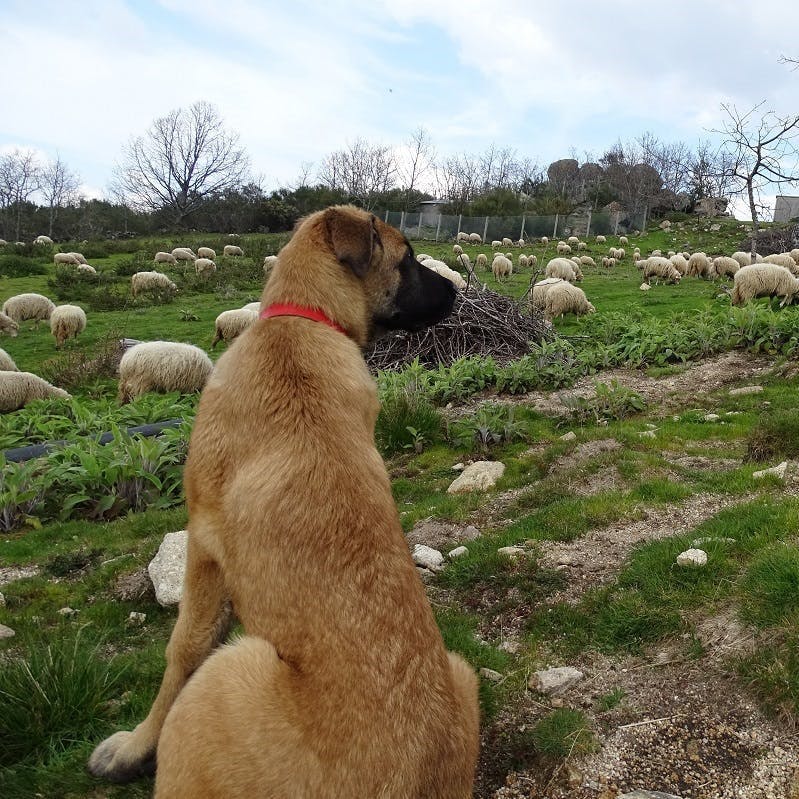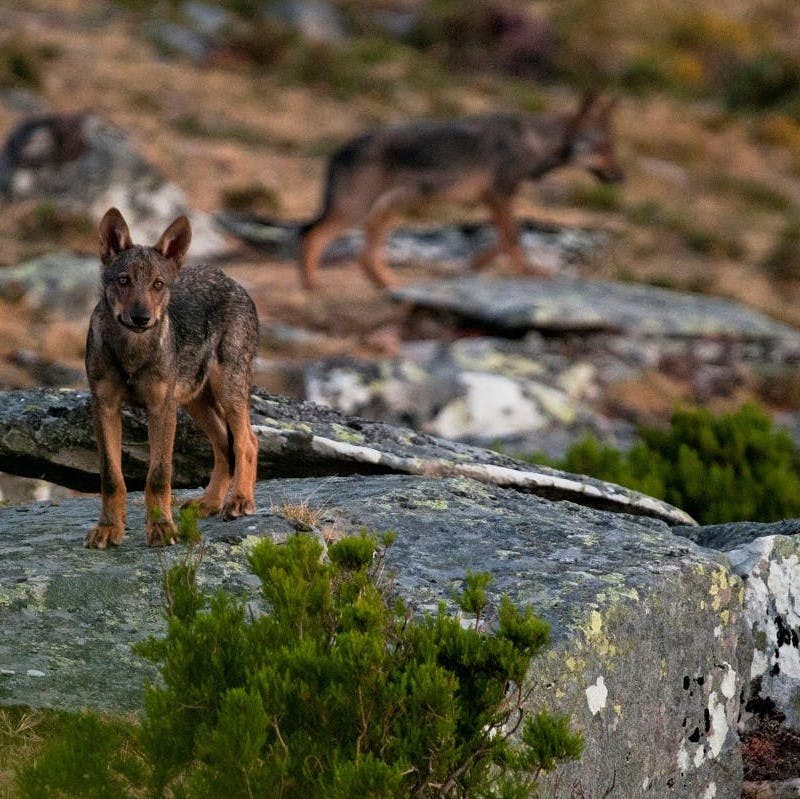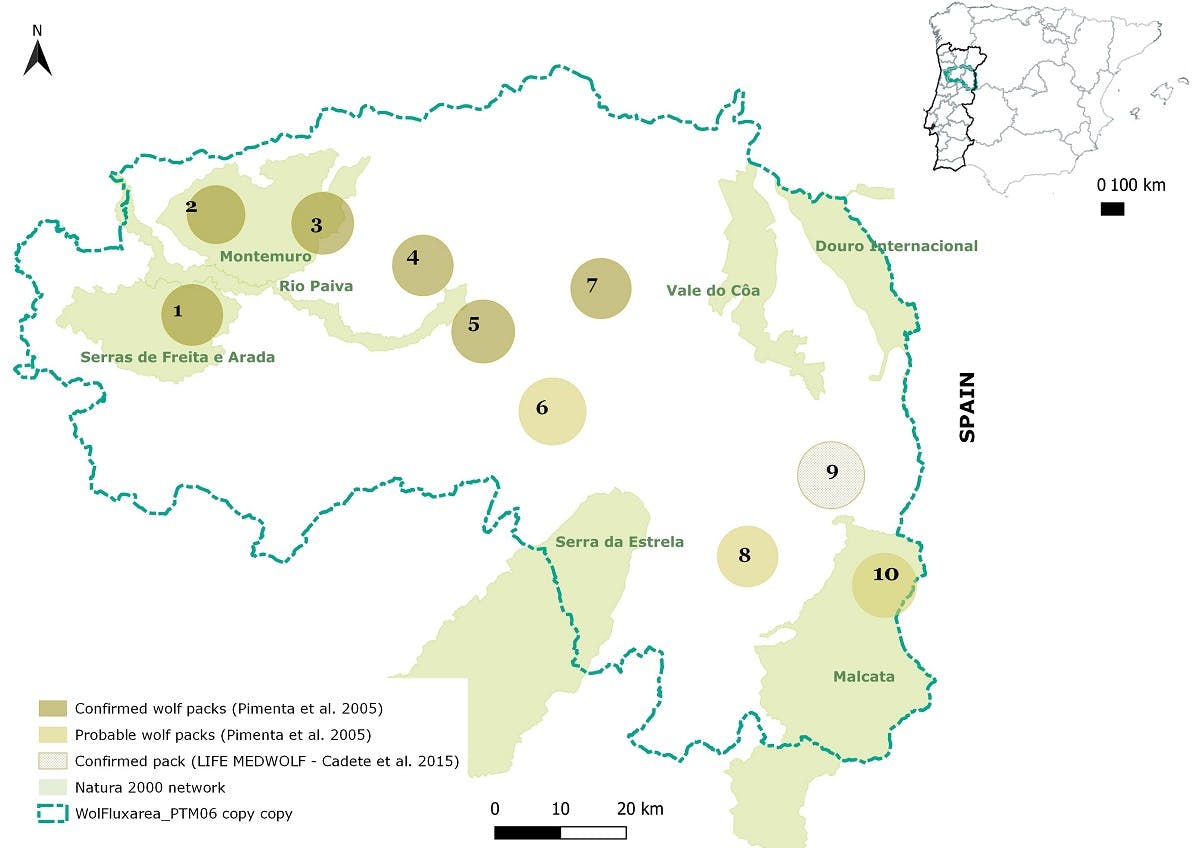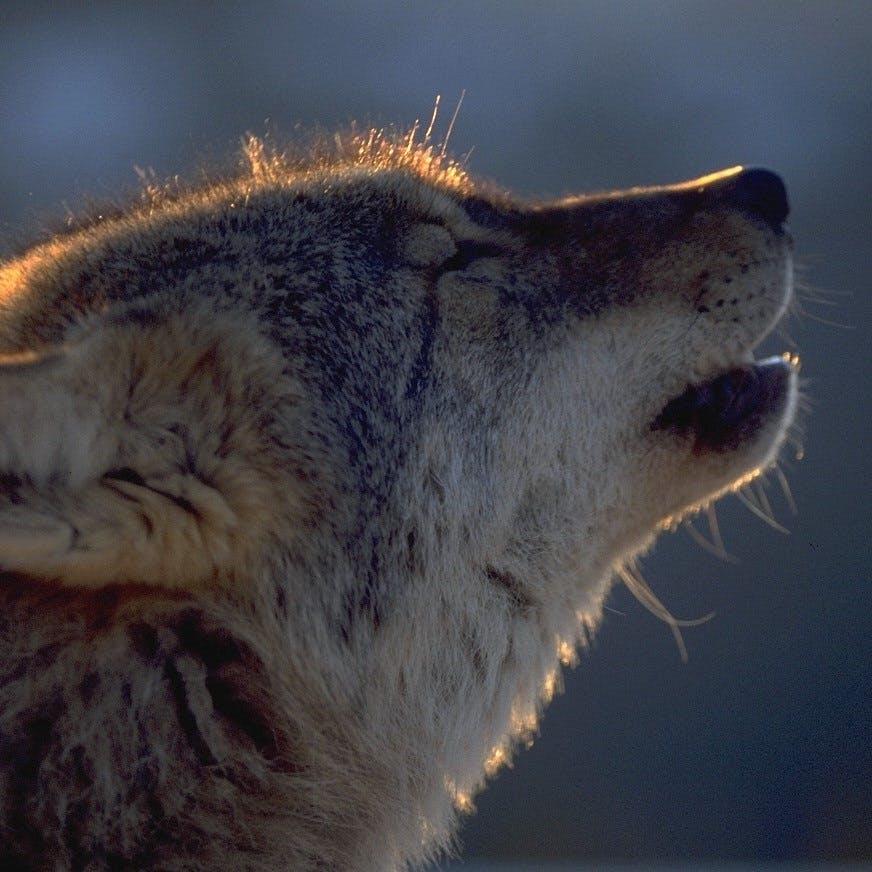- Budget spent: £1,797
- Status: Implemented
South of the Douro river in Portugal, there is an Iberian wolf (Canis lupus signatus) subpopulation that, on top of other challenges, is being threatened by conflict with local farmers. When wolves attack livestock they become an economic burden for the local community, which may respond by killing or harming them. Unless this conflict is resolved it is difficult to see a viable future for the Iberian wolf in the region. We are working with our partners at Rewilding Portugal to focus on this issue. Our members are funding a well-tested solution for minimising wolf attacks: supporting livestock guarding dogs.
Project Timeline
August 2020
The rewilding project to support livestock guarding dogs begins
The intervetion
Livestock guarding dogs from native breeds, such as Serra da Estrela and Castro Laboreiro, can be extremely effective in detecting wolves near the flock/herd and chasing them away, thereby preventing wolf attacks and livestock losses from occurring. Still, there are significant costs associated with acquiring and taking good care of the dogs and this can deter farmers from embracing the solution. Rewilding Portugal is working together with Grupo Lobo to address this and make it easier for local farmers to acquire and maintain livestock guarding dogs.
This project involves providing food for 5 - 7 dogs until they are fully grown (about 18 months). Other than encouraging farmers, the intervention is designed to ensure that the dogs are properly fed so that they can become strong and effective protectors of the domestic animals and therefore decrease social conflict between these farmers and the Iberian wolf. Support is directed towards farmers that experience a high risk of wolf attacks and that commit to taking good care of the dogs. Continued check ups with the farmers will be used to evaluate the effectiveness of the project.

Learn more about the context behind this project
A threatened subpopulation
In Portugal, the Iberian wolf population is divided by the Douro river. While north of the Douro the subpopulation is larger and more stable, south of the Douro there are only a handful of scattered packs. This subpopulation is threatened by habitat destruction and fragmentation, large rural fires, illegal persecution, a lack of wild prey, and conflict with farmers.
The main causes of wolf mortality in the region are due to humans – either due to traffic collisions, snares (directed at other species such as wild boar), or illegal persecution (the wolves are illegally shot). Taking into account the small size of the subpopulation (certainly fewer than 50 individuals) and its fragmented and unstable situation, decreasing the main causes of mortality to wolves is critical to ensure the long-term viability of the species in the region.

Tension with local communities
Due to the lack of wild prey and poor protection of domestic animals, wolves often prey on domestic goats, sheep and cows, creating a social conflict with local communities. In the region, livestock breeding is one of the main economic activities, and the attacks from Iberian wolf can have a serious impact on the livelihood of some farmers.
In this context, reducing conflict between wolves and livestock breeders is of paramount importance to safeguard the future of the Iberian wolf in this region and protect the livelihoods of the rural people. Rewilding in this instance is tied to improving coexistence with a large carnivore.

The Project Area
The project area includes the whole wolf range south of the Douro river. It is believed that a large part of the Iberian wolf subpopulation is currently in the areas of Montemuro and Serras da Freita e Arada. There are also some wolf packs in the middle zone of the project, in the areas of Leomil, Trancoso and Lapa. Due to their location and the stability of some of these packs they can play an important role in connecting Montemuro/Freita e Arada with the packs nearer the Spanish border.
This is extremely important considering that the wolf subpopulation is genetically isolated, particularly the packs in Montemuro/Freita e Arada. In the west, the areas of the Douro International and Malcata are currently the known limits of wolf distribution. This is an area of more irregular wolf presence, which receives dispersing wolves from the Spanish population. The stability of these packs plays a key role in bringing genetic diversity to the area.

The broader context of rewilding efforts in the area
Rather than being implemented in isolation, the chosen project will fit with the wider context of ecological restoration and rewilding in the area. Rewilding Portugal is coordinating the LIFE WolFlux project, which aims to decrease the ecological and socioeconomic barriers to the long-term viability of the Iberian wolf subpopulation south of the Douro river. Rewilding Portugal is implementing this five-year project (2019-2023) in partnership with other local partners. The LIFE WolFlux project is co-financed by the Endangered Landscapes Programme. The chosen Mossy Earth project will complement this LIFE project and allow Rewilding Portugal to have a greater impact in the region.

An overview of wolf conservation in Europe
Although the wolf is listed as ‘Least Concern’ in Europe, it is threatened at a national level in several countries (Sweden/Norway, Germany, France). It is therefore protected in Europe under a number of European Union agreements. The Berne Convention (The Convention on the Conservation of European Wildlife and Natural Habitats lists the wolf in Appendix II as a strictly protected species. Some countries that have signed the convention however, have been able to exclude the wolf from this convention, for example Finland, Poland and Spain.
The wolf is also protected by the Habitats Directive (Council Directive 92/43 EEC of 21 May 1992 on the conservation of natural habitats and wild flora and fauna). It is listed in Annexe II, which means it is considered species of community interest whose conservation requires the designation of special areas and Annexe IV, a species in need of strict protection. However, in some areas of Spain and Greece, in the Baltic countries and in the Finnish reindeer herding area, wolves are listed in Annexe V, which means they are a species whose taking in the wild and exploitation may be subject to management measures.
Through the Berne Convention, an Action Plan for the conservation of wolves in Europe has been developed which requires management of wolf populations across borders and the formulation of individual action plans for each country. However, wolves are still legally hunted in a number of non-EU countries, including Russia, Belarus, Ukraine, FYR Macedonia, with limited legal hunting in some EU member states.

Sources & further reading

- “Mitigating carnivore–livestock conflict in Europe: lessons from Slovakia” - Cambridge University Press 2011
- “Wolf predation on cattle in Portugal: Assessing the effects of husbandry systems” - Biological Conservation 2017